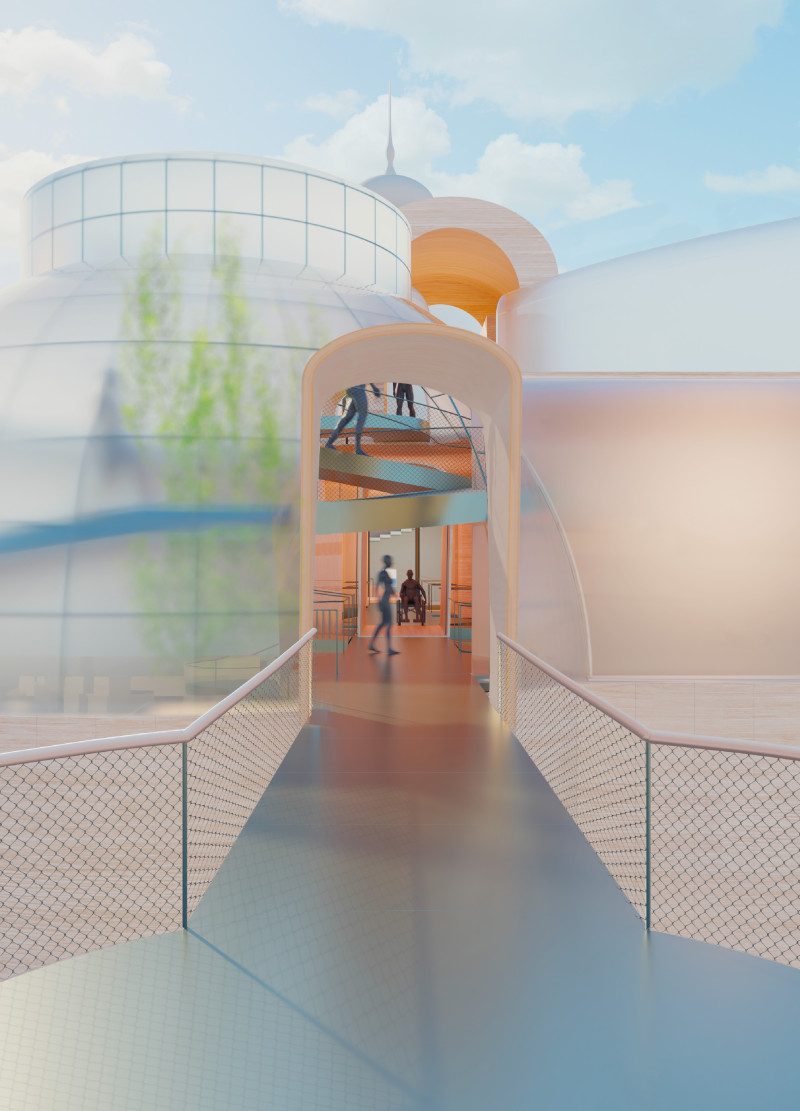5 key facts about this project
Upon entering the project, one immediately notes the careful consideration of spatial organization. The building is laid out to promote a natural flow between spaces, allowing users to navigate effortlessly from one area to another. This thoughtful layout facilitates both individual and communal activities, making it an ideal environment for both work and leisure. The integration of public spaces within the design encourages social interaction, fostering a sense of community that is often lacking in urban settings.
The architectural design employs a diverse palette of materials that are both locally sourced and environmentally friendly. Concrete forms the structural backbone of the building, providing durability and stability. Steel elements are used thoughtfully throughout, contributing to both the aesthetic and structural integrity. The use of glass is particularly notable; large, expansive windows not only flood interior spaces with natural light but also create a visual connection between the interior and the exterior, inviting the landscape into the building. Wooden accents are incorporated strategically, adding warmth and a tactile quality to various spaces, while brick and stone elements pay homage to local architectural traditions, anchoring the design in its geographical context.
One of the most distinctive aspects of this project is its approach to sustainability. The design incorporates several green features, such as a green roof that not only improves insulation but also serves as a habitat for local wildlife. Rainwater harvesting systems are integrated to reduce water consumption, further emphasizing the project’s commitment to environmental stewardship. The use of passive design principles allows the building to maintain comfort without excessive energy consumption, showcasing how modern architecture can harmoniously coexist with nature.
The aesthetic qualities of the building are carefully balanced, avoiding overly ornate details in favor of a clean, modern look that respects its surroundings. The architectural style leans towards minimalism, with an emphasis on simple lines and open spaces that promote tranquility and focus. The color palette is neutral, ensuring that the structure blends seamlessly with the urban environment while still standing out as a unique addition to the skyline.
Unique design approaches manifest in various features, such as adaptable spaces that can change in function over time. This flexibility ensures the building remains relevant as the needs of its users evolve. Additionally, the incorporation of artwork and local cultural motifs serves to personalize the space, celebrating the community’s identity and fostering a deeper connection between the building and its users.
Overall, this architectural project represents a significant advancement in modern design, showcasing how thoughtful architecture can improve the quality of life within urban environments. The balance of sustainability, functionality, and community engagement positions the project as a model for future developments. It encourages a deeper exploration of its architectural plans, sections, and ideas to fully appreciate the nuances of its design. For a comprehensive understanding of how these elements come together, readers are invited to delve deeper into the project presentation, where further insights await.























